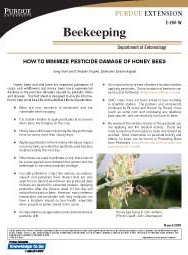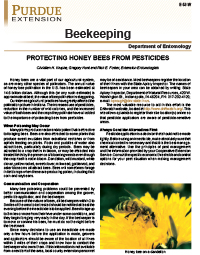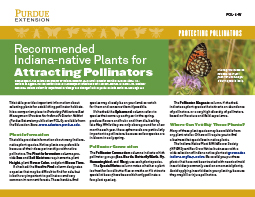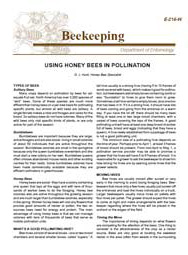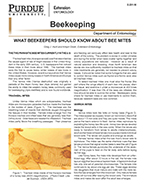Country Lifestyle
Beekeeping
You are sorting the results by showing only those that are free. (Clear)
How to Minimize Pesticide Damage of Honey Bees
Honey bees and wild bees are important pollinators of crops and wildflowers, but honey bees have experienced declines in the past two decades caused by parasitic mites and disease This publication provides information to...
Protecting Honey Bees from Pesticides
Honey bees are a vital part of our agricultural system, as are many other species of pollinators. But pesticide misuse can threaten these important resources. This publication discusses alternatives to pesticides to prot...
Protecting Pollinators: Recommended Indiana-native Plants for Attracting Pollinators
This publication provides a list of recommended plants that homeowners and others can use to establish and conserve effective pollinator habitats in Indiana - from small-scale backyard improvements to large-scale plan...
Using Honey Bees in Pollination
This publication Information includes pollination procedures, pesticide recommendations and the duration of the toxic effects on bees....
What Beekeepers Should Know About Bee Mites
Varroa mites (Varroa destructor) can be seen on the surface of both adult and immature honey bees, and they can move about quickly. The adult female Varroa mite is a shiny, reddish-brown, shield-shaped object about 1....









